Agata F-Wieruszewskaʼs connection to Greece began in the 1980s when she first visited as a tourist. She grew up in a family fascinated by Greek art and philosophy. “My father was an engineer, my mother a pharmacist, and they often read me Greek myths as bedtime stories,” she recalls. While studying at the School of Fine Arts in Warsaw, she explored Greek art, but she never imagined she would one day call Crete home.
Twelve years ago, however, life took an unexpected turn, leading her to the Kissamos region near Chania, Crete. There, she found endless inspiration in the island’s daily life and rich folklore. These influences are evident in her colorful, dynamic paintings, works offering a glimpse into the routines and traditions that shape the Cretan way of life. Along the way, she also found a new name; in Greek, “Agata” sounds a lot like “gata,” meaning “cat,” so her new friends started calling her “Agapi” instead, a name that happens to mean “love.”

Her art radiates warmth, authenticity, and human connection. It celebrates the quiet dignity of work, tradition, and resilience. With expressive brushstrokes and vibrant yet earthy tones, she creates an emotional depth that draws the viewer into the scene rather than just depicting it. There is a delicate balance between nostalgia and immediacy – her figures, often clad in traditional garb or depicted carrying out age-old tasks, are clearly connected to the past yet feel present and alive. Textures ranging from fabric to fish and dough add a layer of realism while maintaining a painterly softness. Her works do not merely depict people; they tell stories of perseverance, of heritage and of finding joy in the ordinary.
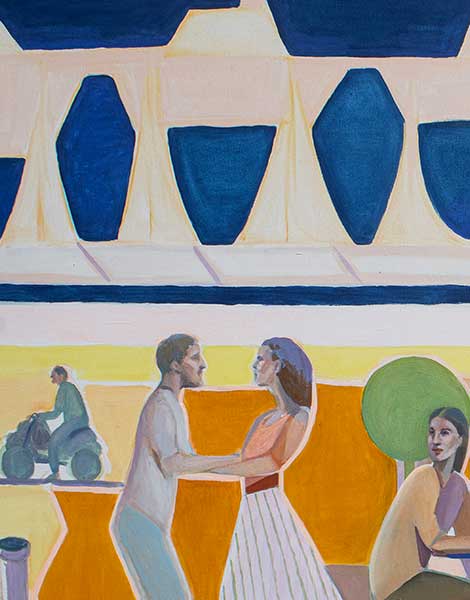
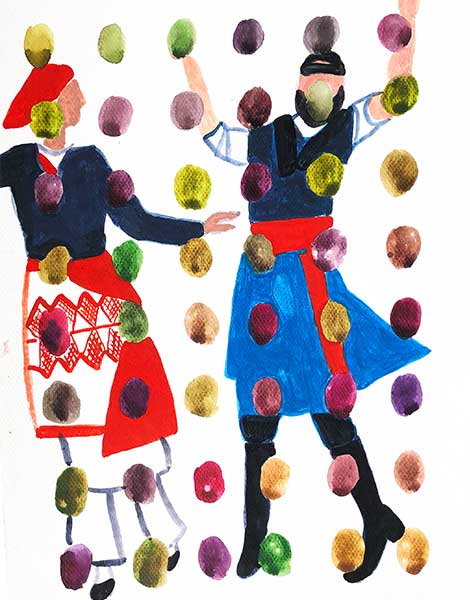
“The folklore in my paintings is inspired by both everyday life and the deeper cultural contrasts I observe,” the artist explains. “While I’ve always been drawn to textiles and fashion, I don’t focus solely on their surface – I explore the shared human experiences beneath them. People are fundamentally similar, yet shaped by their environments. In Poland, the colder, cloudier climate influences how people live and dress, while in Greece, the warmth and sunlight create a completely different way of being. The North wraps itself in the night, while the South awakens to the sun.”
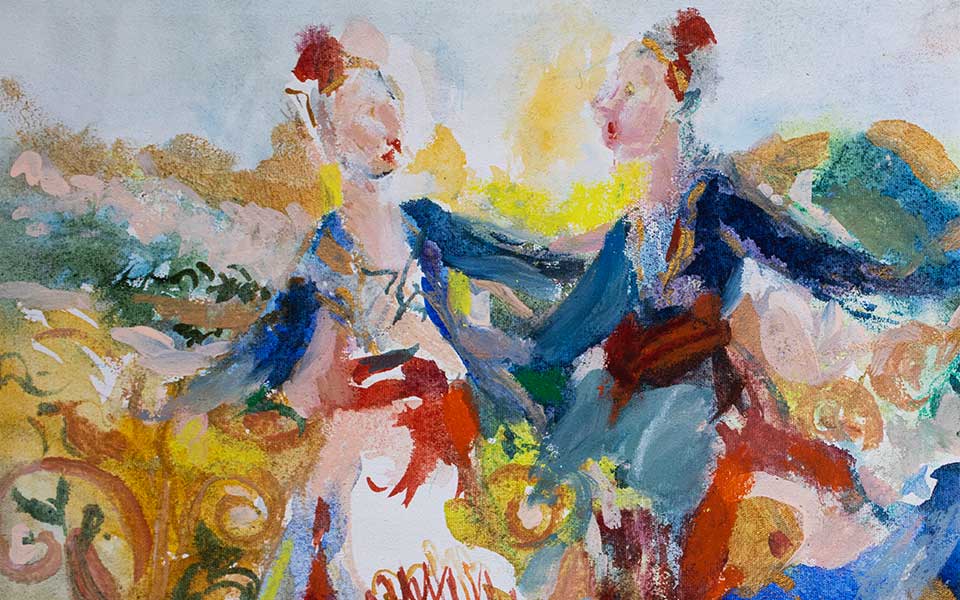
But what does “folklore” mean to Agapi?
“To me, folklore is an honest and authentic expression of the joy of life, rooted in freedom and autonomy. Although incredibly diverse, it is united by creativity. That’s what fascinates me most: it’s extraordinary. In folklore, I find the spirit of the place I live. As an artist, I have to notice what is fleeting and invisible. When I open an old chest, I don’t just see clothes – I see mountains and valleys, rivers and olive groves, the wonders scattered across Greece. When I lose my way, I find it again in the heartbeat of the earth, which, if you’ve gone deaf to it, is best rediscovered through myths and folk culture. Folklore, passed down through generations, teaches us about the past, and the past constantly reorganizes itself in the present. It’s right beside us, just behind a wall of time that the present keeps erasing. By resisting that erasure, I try to preserve it.”
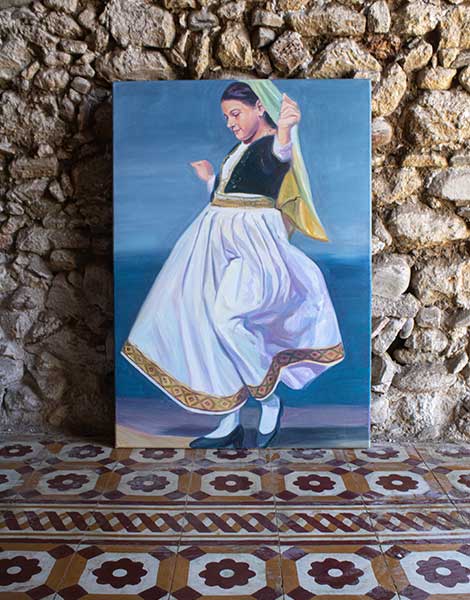
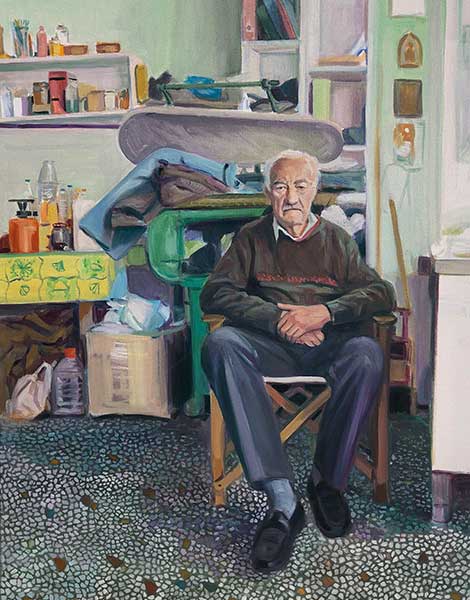
Before she begins a painting, Agapi takes countless photographs. “Photography helps me capture details and serves as a foundation for my work. I often combine multiple photographed moments into a single story.” But her paintings are far from simple reproductions of photographs. “When I paint, I form an intimate, emotional connection with each subject. I try to befriend the people in my paintings, and I hope I succeed in capturing their energy. Every moment is the beginning of something new, and I experience each one differently. That’s how I create a world where it’s easy to forget who I really am – because today will never be the same as tomorrow.”
This deep engagement with her subjects mirrors the way Agapi has immersed herself in a new culture. Moving to Crete has given her a fresh perspective, shaping both her art and her life. When asked about her experience, she acknowledges the contrasts between Poland and Crete while embracing the beauty of both.
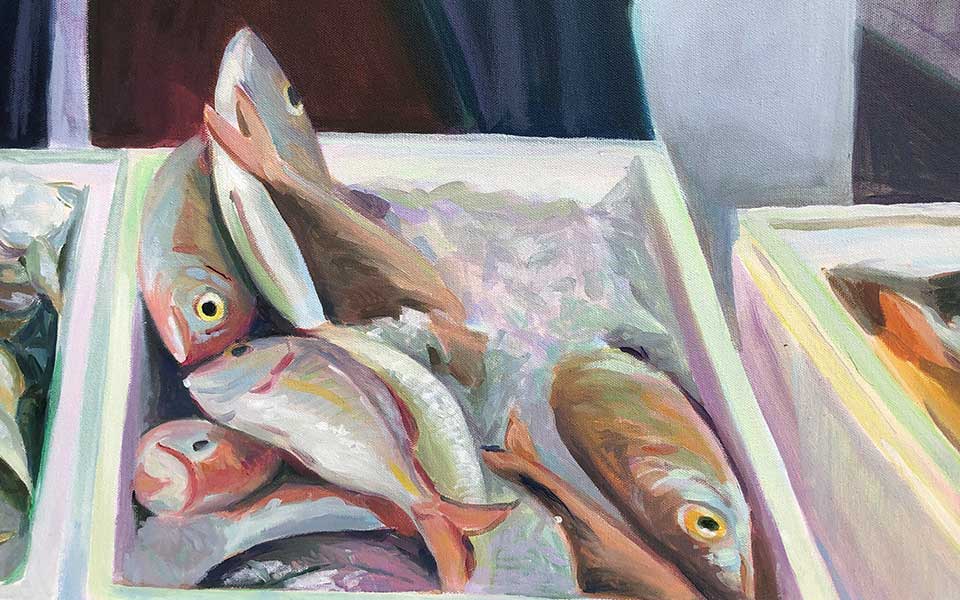
“Living on Crete: it sounds like a dream, and it really is the fulfillment of one. After years of living at full speed, I appreciate the Greek ‘siga, siga’ (‘slowly, slowly’). Poland only gets 40 to 70 sunny days a year, so I treasure the Mediterranean climate. Poland will always be in my heart, but on Crete I find peace and balance. Looking out toward the horizon always helps me pause and find calm. I’ve embraced Greek openness and spontaneity more than Polish cautiousness and distance. But in reality, we have a lot in common. Both nations have faced similar traumas – Greece under Turkish occupation, Poland under Russian oppression. Our resistance to losing freedom is deeply ingrained in our identities. Greeks and Poles value independence above all else. It doesn’t matter if the wind is warm or cold; wind itself is freedom, an unrestrained flight. And both Greeks and Poles know that when wings are tied down for too long, you can forget that you were made to fly. At our core, I don’t think we’re so different.”
Just as Agapi blends multiple moments into a single composition on canvas, she weaves her experiences from two cultures into a harmonious whole. Her art is not just a tribute to the people she paints but also a reflection of her own journey – one that embraces change, memory and the ever-evolving nature of identity.












